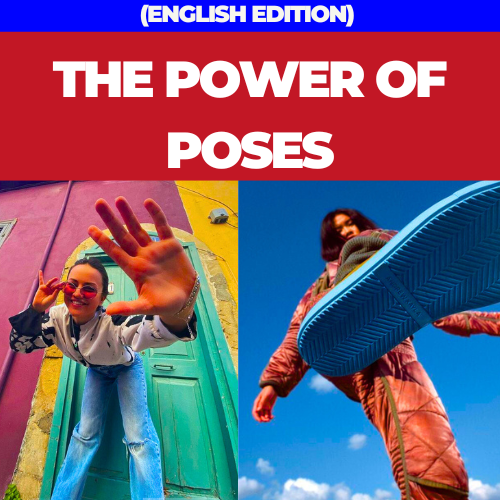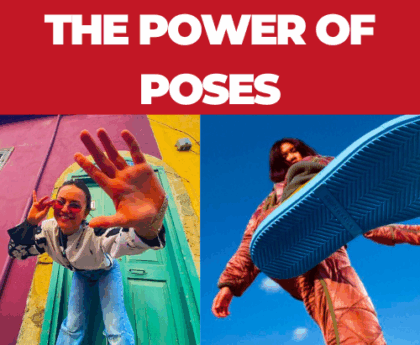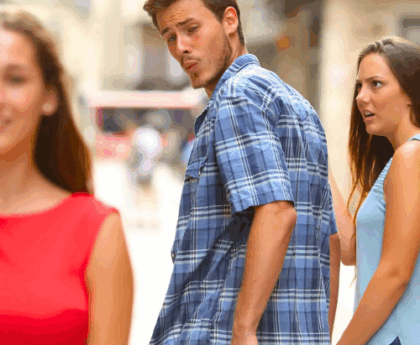How Do Models Learn How to Pose? | The Complete Guide to Posing Mastery
Discover how models learn how to pose professionally, from foundational techniques to advanced methods. This guide explores posing tips, training strategies, and expert secrets to help you master modeling poses.
Introduction: Why Posing Matters in Modeling
how do models learn how to pose? Modeling is much more than wearing fashionable clothes or standing in front of a camera. A model’s ability to pose transforms a simple photograph into an expressive, impactful image that conveys emotion, style, and purpose. But how do models learn how to pose?
Contrary to the belief that modeling is all about natural beauty, posing is an acquired skill honed through practice, training, and a deep understanding of body language, movement, and aesthetics. In this comprehensive guide, we’ll break down how models learn to pose, the best practices for mastering modeling poses, and the resources available for aspiring and professional models to sharpen their posing skills.
Table of Contents
- The Importance of Posing in Modeling
- Do Models Naturally Know How to Pose?
- The Foundational Elements of Posing
- How Models Train to Pose
- Common Posing Techniques Every Model Must Know
- The Role of Body Awareness and Posture
- Facial Expressions and Micro-Expressions
- Working with Photographers: Communication and Posing
- Tools and Resources Models Use to Learn Posing
- Advanced Posing: Runway, Editorial, and Commercial
- Common Mistakes Models Make When Posing
- Tips for Aspiring Models to Learn Posing Faster
- Final Thoughts: The Continuous Journey of Learning to Pose
1. The Importance of Posing in Modeling
Posing is at the heart of modeling. A great pose can:
- Enhance the design and cut of clothing.
- Communicate mood and emotion.
- Highlight physical features.
- Differentiate between commercial, editorial, or artistic styles.
In fashion and advertising, the wrong pose can distort garments or convey the wrong message. Hence, models are expected to be adaptable and proficient in various posing styles that fit different brands, designers, and creative visions.
2. Do Models Naturally Know How to Pose?
While some individuals may possess a natural sense of movement and an intuitive understanding of how to position their body, most successful models refine their posing abilities through dedicated practice.
Even the most iconic supermodels, like Gisele Bündchen or Naomi Campbell, have spent years perfecting their craft. Modeling requires an acute awareness of one’s body, the camera, and the overall aesthetic of the shoot. Therefore, posing is learned and refined over time, making modeling a professional skill rather than an innate talent.
3. The Foundational Elements of Posing
Before diving into advanced poses, models must master the fundamentals:
1. Posture
A neutral yet confident stance is key. Models learn to:
- Keep their spine straight.
- Engage core muscles.
- Relax shoulders.
2. Angles
Learning how different body angles affect how they appear on camera is essential. For example:
- Turning slightly to the side can make the body appear slimmer.
- Tilting the head can create an elongated neck.
3. Balance
Understanding weight distribution is critical. Models practice shifting their weight:
- From one hip to another.
- From front foot to back foot.
4. Symmetry vs. Asymmetry
Poses with symmetry often convey elegance, while asymmetrical poses can suggest dynamism or edge.
4. How Models Train to Pose
Models don’t become pose experts overnight. Here’s how they typically train:
A. Professional Modeling Classes
Many models enroll in modeling schools that offer structured posing classes, covering:
- Runway walking.
- Camera-facing techniques.
- Pose transitions.
B. Personal Practice in Front of Mirrors
Practicing in front of a mirror allows models to observe their posture, angles, and expressions.
C. Working with Photographers
By collaborating with photographers, models receive real-time feedback on:
- How their poses appear through the lens.
- Adjustments needed for lighting and framing.
D. Studying Fashion Magazines and Campaigns
Models often analyze the work of others to understand:
- Current posing trends.
- Effective body language.
- Styling poses for different fashion genres.
5. Common Posing Techniques Every Model Must Know
Professional models develop a repertoire of versatile poses. Here are essential techniques:
1. The “S-Curve” Pose
A classic stance where the model creates an S-shape with their body for a naturally elegant look.
2. Walking Pose
Simulating a stride adds movement and dynamism to photos.
3. Sitting and Leaning Poses
These require control to avoid slouching and to maintain aesthetic lines.
4. Hand Placement
Models learn to avoid awkward or stiff hands by:
- Softly placing hands on hips.
- Lightly touching the face or hair.
5. Eye Contact
Deciding between:
- Direct eye contact for intensity.
- Looking away for mystery or vulnerability.
6. The Role of Body Awareness and Posture
Body awareness enables models to understand how their movement affects the shot. This includes:
- Recognizing the limits of flexibility.
- Understanding how lighting interacts with body contours.
- Maintaining posture even during uncomfortable poses.
Exercises for Body Awareness:
- Yoga and pilates for flexibility.
- Dance classes for fluidity.
- Core strengthening workouts for posture control.
7. Facial Expressions and Micro-Expressions
Posing isn’t just about the body; the face tells the story. Models train their facial muscles to achieve:
- Subtle smirks.
- Intense glares.
- Relaxed smiles.
- Neutral, blank expressions.
Micro-Expressions
These are tiny facial cues that convey emotions such as:
- Curiosity.
- Desire.
- Confidence.
Models practice controlling micro-expressions by observing themselves in the mirror and through professional coaching.
8. Working with Photographers: Communication and Posing
The relationship between model and photographer significantly influences posing:
- Direction Following: Models must interpret and execute directions promptly.
- Collaboration: Experienced models often co-create poses with photographers.
- Feedback Loops: Reviewing shots on set helps models refine their poses in real-time.
Effective communication ensures the model’s pose aligns with the creative vision of the shoot.
9. Tools and Resources Models Use to Learn Posing
A. Posing Books
- “The Model Posing Guide” by Coco Rocha.
- “Picture Perfect Posing” by Roberto Valenzuela.
These provide structured guidance and visual examples.
B. Online Courses and Tutorials
Platforms like:
- Udemy
- MasterClass
- YouTube
Offer courses on posing fundamentals and advanced techniques.
C. Posing Apps
Apps like PoseBook or Model Posing Guide provide pose libraries for practice.
D. Feedback from Mentors
Working with experienced models or agents offers personalized posing advice.
10. Advanced Posing: Runway, Editorial, and Commercial
1. Runway Posing
Poses on the runway are fleeting but purposeful:
- Strong stance at the end of the runway.
- Minimal hand movement.
- Fluid transitions.
2. Editorial Posing
High-fashion editorials demand:
- Creative and exaggerated poses.
- Risk-taking in movement.
- Mastery of unconventional angles.
3. Commercial Posing
Commercial modeling requires:
- Relatable, approachable poses.
- Emphasis on the product or service.
- Natural expressions.
Each modeling sector requires tailored posing strategies to meet specific industry demands.
11. Common Mistakes Models Make When Posing
Despite training, even professionals make mistakes. Awareness of these pitfalls is essential:
- Over-posing: Looking too forced or unnatural.
- Stiffness: Lacking fluidity in transitions.
- Ignoring Hands: Allowing hands to look awkward or misplaced.
- Poor Posture: Slouching or collapsing the core.
- Not Engaging with the Camera: Failing to connect emotionally.
Avoiding these mistakes separates amateur from professional models.
12. Tips for Aspiring Models to Learn Posing Faster
1. Practice Daily
Spend at least 15 minutes practicing poses in front of a mirror or camera.
2. Record Yourself
Watching playback helps identify areas for improvement.
3. Study Iconic Models
Observe how professionals like Tyra Banks, Gigi Hadid, or David Gandy pose.
4. Take Movement Classes
Dance, acting, or yoga classes can improve grace and fluidity.
5. Seek Constructive Feedback
Work with photographers, stylists, or mentors who can offer actionable posing critiques.
6. Understand Your Best Angles
Experiment to discover which body positions and facial expressions suit you.
7. Stay Fit and Flexible
Physical conditioning supports better posing endurance and flexibility.
13. Final Thoughts: The Continuous Journey of Learning to Pose
Learning how to pose is an ongoing journey for every model. As fashion trends evolve and new styles emerge, models must adapt their posing techniques to stay relevant and effective.
From understanding fundamental principles to mastering advanced skills across different modeling sectors, posing is both an art and a science. Whether through professional classes, self-practice, or industry collaborations, continuous learning is key to success.
So next time you see a breathtaking fashion photo, remember—the model didn’t just stand there. They trained, practiced, and perfected their pose, making it look effortless while communicating volumes.
FAQs About How Models Learn How to Pose
Q1: How long does it take to learn how to pose as a model?
It varies by individual, but with consistent practice, basic posing can be learned in a few months. Mastery may take years of experience.
Q2: Can anyone learn how to pose?
Yes! Posing is a skill that anyone can develop with practice, regardless of natural ability.
Q3: Are modeling schools necessary to learn posing?
While not required, modeling schools offer structured learning and professional feedback that can accelerate progress.
Q4: What are some beginner-friendly poses?
The classic S-curve, hands-on-hips, and relaxed standing poses are great for beginners.
Q5: How important is facial expression in modeling poses?
Extremely important. The face conveys emotion and connects with the audience, complementing body poses.
Final Call to Action
If you’re an aspiring model, start practicing your poses today. Use mirrors, record videos, and consider professional coaching. Remember, posing is your secret weapon in creating unforgettable, powerful images!
For more modeling tips, guides, and industry insights, subscribe to our newsletter or follow us on Instagram for daily posing inspiration.





